Keyword research is an essential part of your Amazon product launch. Investing the time to properly assess the most important keywords in your niche can maximize your revenue potential. It may position your product to be the highest-ranked item for valuable search queries.
But it’s a science and an art!
If you’ve ever seen Amazon product listings with the super-long, keyword-stuffed, one-size-fits-all, uber-optimized product title, you may wonder what human would actually read such a title and be convinced to purchase the product.
This is a valid question. Humans don’t naturally like long sentences.
But this is where the (unknown) science comes in. Amazon’s algorithm finds value in those ridiculously worded titles.
In the above example, you can see that the seller has loaded their listing with dozens of keywords!
Sellers use these long titles so that their products show up in more searches for more keywords. They perform keyword research to identify the exact search terms they want to target. And by incorporating variations into their title, description, bullet points, FAQs, and even images, they improve their chances of being seen by potential customers.
But does this keyword strategy actually work? It does, however, there is also a LOT more to know about Amazon keyword strategy.
In this post, we’ll explore:
- Why Amazon keyword research is so important for your success on Amazon;
- The different tools you can use to find the best keywords for your product;
- How to use keywords to attract more buyers, sell more units, and ultimately generate more revenue;
- And what you need to know about keyword planning before you get started.
Why is Amazon keyword research important?
Imagine for a second that Amazon is that friend you go to any time you need a product recommendation.
For the most part, Amazon is pretty good at recommending products to you. However, they always seem to lack confidence. After they recommend something, they need you to confirm that what they recommended is exactly the item for which you were looking.
In essence, that’s how search engines work.
They’re great at guessing what you need but aren’t confident about it at first. It’s not until many many thousands of people have told them that what Amazon suggested is the correct answer do they start to believe you. Until then, they have to go by whatever descriptive terms they’ve been given, and those descriptive terms are called keywords.
When you first launch a product on Amazon, keyword research should be your primary focus. When Amazon’s algorithm determines that your keyword is relevant for a particular product search, it places your product higher in the search results.
This placement on the search results page is known as your ranking.
So just how big of a deal is it to rank?
Jungle Scout asked over 1,000 consumers about their online shopping behaviors and discovered the following:
- 73% of shoppers click on the top listing in search results
- 14% of shoppers click on the second listing
- 5% of shoppers click on the third listing
That adds up to 92% of all clicks on the search page. The remaining 8% of clicks are spread throughout the remainder of the product listings.
What does that mean in dollars and cents?
Imagine that there is $100,000 worth of monthly sales tied to a particular keyword. The seller with the top product will earn $73,000 of the sales. Second place will take $14,000. And third will take $5,000.
That leaves $8,000 to be shared among the rest of the listings. (Imagine there are another 100 listings for that keyword; that’s only $80 in sales per seller per month.)
It’s crucial that your product ranks high!
What do you need to know about Amazon keyword research?
Okay, sure. There are a lot of moving parts to Amazon keyword research. Fortunately, this article is going to cover everything you need to know, so you’ll be a master in no time.
Amazon is a search engine
Amazon is one of the largest search engines in the world for e-commerce and general product inquiries. In fact, 66% of U.S. consumers start their product searches on Amazon.
For that reason, Amazon users are extremely purchase-focused. They enter the search term for what they want to buy, find it, and check out. And since they aren’t there to search randomly, they want maximum speed and efficiency.
Amazon uses its own internal advertising system called Amazon PPC
Next, it’s key that you understand that Amazon’s search engine has its own system for advertising called Amazon Pay-Per-Click (PPC).
As a seller, you can use Amazon PPC to promote your products by placing bids on clicks for your product listings. If your bid is higher than your competitors’, your product will appear higher in the search results with the “sponsored product” badge on it.
So while your new product may not be able to appear at the top of the search results organically — meaning the product’s position based on its natural ranking factors (see below) — by spending money on ads, your product can jockey for a top spot and make more sales.
Amazon uses multiple keyword ranking factors
So what does Amazon consider when it places your product in a top spot?
While Amazon isn’t exactly giving away the “secret sauce” to their algorithm’s coding, we have discovered that there are a number of factors that helps a product position high in Amazon’s search results, including:
- The number of customers that add your product to their shopping carts.
- The volume of sales you have made with the product in the past.
- Your product’s unit/session percentage rate:
- This is a special formula Amazon uses to gauge your product’s viability. To calculate the unit per session, Amazon divides the number of units your product has sold by the number of visits to the page (the “sessions”).
- For example, if 1,000 shoppers visit your page and you sell 200 units, your unit per session percentage rate is 200/1,000, or 20%.
- The number and rating of your reviews:
- Amazon only wants to show the best-rated products on their search pages in order to guarantee customer satisfaction.
- Your product’s relevancy (based on its title, bullet points, and description).
Some of these factors require time to build as your product gets more sales, but increasing your listing’s relevancy is something immediately within your control.
And how do you do that? With keywords!
There are quantitative ways to know exactly which keywords you should include in your listing to maximize your relevancy for the most profitable search queries.
So let’s explore some of the tools and strategies to find these keywords!
Amazon keyword research tool #1: Keyword Scout
While there are a couple of free options out there for tools (detailed below), if you want a silver bullet to keyword success (see the importance to your bottom line above!), we recommend Jungle Scout’s Keyword Scout.
How does Keyword Scout work?
With Keyword Scout, you can instantly generate thousands of high-converting, top ranking keywords to get your product noticed on Amazon.
Keyword Scout pulls actual advertising data directly from Amazon, and once you enter a keyword phrase or ASIN (Amazon’s standard identification number; a unique tag given to a product once it’s listed on Amazon), it displays information related to that keyword.
In addition, it generates other keywords related to your search.
Here are just a few of the questions you can answer using Keyword Scout:
- In addition to the entered keyword or ASIN, what other relevant keywords are there? (Keyword Scout displays dozens of additional keywords related to your search or ASIN)
- How many exact match searches are there been for the keywords in the last 30 days? (Exact matches are searches on Amazon that use a specific keyword or phrase with no variation)
- How well is the keyword trending? Jungle Scout offers two types of trending information: 30-day and 90-day. We take the current keyword volume for the phrase and divide it by the keyword volume from the previous period (either 30-day or 90-day respectively) to arrive at these percentages.
How to use Keyword Scout
Allow me to demonstrate how easy it is to use Keyword Scout, and how you can generate powerful new keywords in seconds.
First, you’ll want to log in to your Jungle Scout account. Once there, click on the Keywords header on the left-hand side, then click Keyword Scout from the list that appears. Finally, enter in a keyword or product ASIN to generate keywords for.
We’re going to use the term “ice chest.”
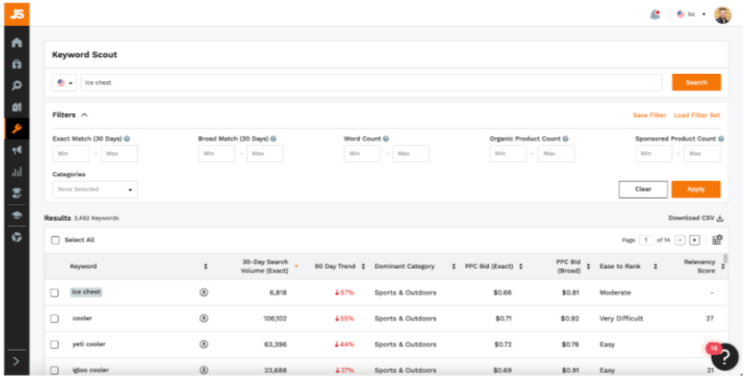
As you can see, Keyword Scout came up with 3,492 keywords for “ice chest.” It shows us that the 30-day search volume for the product is 6,818 searches on Amazon.
Use the advanced filters Keyword Scout offers to narrow down your keyword search. For example, I set a minimum of 1,000 broad match searches and it narrowed down my results to 512 keywords. Now, I’ll only see relevant keywords that receive at least 1,000 searches per month.
Once you’ve generated a list of new keywords, you can learn a lot more about them by viewing the data in Keyword Scout’s various columns.
In addition to being a powerful keyword research tool, Keyword Scout also complements Jungle Scout’s product research tools. For instance, it offers insights into advertising spend for a given keyword — as you can see above, the “Exact” and “Broad” PPC bids for “ice chest” are $0.66 and $ 0.81, respectively.
What can you do with this information?
Let’s assume that it takes an average of 10 ad clicks to make a sale on Amazon, for a product that sells for $30. That means the total ad cost per sale will be $6.60 for Exact terms and $8.10 for Broad terms (10 x $0.66 and 10 x $0.81 respectively).
So, when you start estimating the costs for a product you hope to sell on Amazon, you can pencil in $6.60 to $8.10 for your marketing costs.
The 2.5% Rule
A good rule of thumb I like to use for guessing ad costs is to assume that the bid costs Keyword Scout shows me are worth approximately 2.5% of the product’s sales price on Amazon. As for the sales price, I determine that by dividing the average cost-per-click by 0.025 (or 2.5%).
For example, if Keyword Scout shows me that the average ad bid is $0.50, then I try to price my product around $20 ($0.50 divided by 2.5% is $20.00).
Inversely, you can check to see if the competition is high or low using this same rule.
If we find that the average price for products similar to mine is priced at $20.00, and the average bid price is $1.00 per ad click, we can divide the average ad price by the average sales price to get our ad click percentage.
And if the ad cost per click percentage rate is higher than 2.5%, that means the product might be in a competitive niche and ad costs will be high. Vice versa, if the ad cost per click percentage rate is equal to or lower than 2.5%, then competition for the product is low.
Again, this is a rule of thumb. Be sure to examine your costs and metrics before you make a decision.
Amazon keyword research tool #2: Google Keyword Planner
Google’s Keyword Planner is a free tool that shows you estimated search volumes for any word or phrase. It can also help you find other related phrases.
With troves of data available via Google’s search engine, you can also segment the information by geography. This is extremely helpful if you are selling on Amazon UK or another non-US Amazon site.
To get to the Google Keyword Planner, you have to create a free AdWords account. But, you won’t need to create any active campaigns or spend any money.
Once you have created your account, you can find the Keyword Planner under the Tools tab, or you can go directly to https://ads.google.com/aw/keywordplanner
As for pulling relevant keywords from the Planner, there are several helpful methods you can use.
Start with some main keywords
If we drop in some main keywords, or “head terms”, we can start surfacing other search phrases that may be useful.
The strategy here is to start with the main keywords, like “baby yoda”, and then drill down into more specific long tail keywords people are searching for, like “baby yoda robe” or “baby yoda plush”.
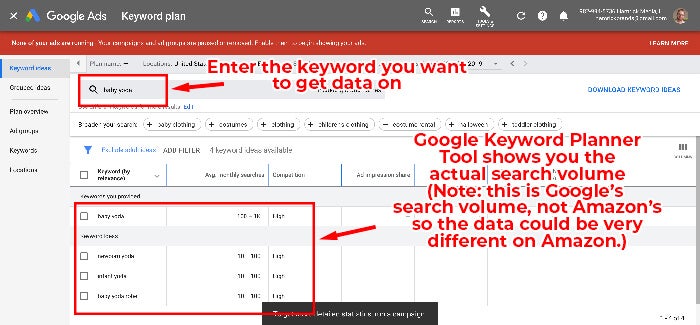
As you can see from the screenshot above, you can find some vital data that way. (Keyword — by relevance — is the list of keywords most-relevant/related to the keywords you entered; in this case, it’s “baby yoda.”)
A very important thing to note regarding average monthly searches that are shown on the Google Keyword Planner: the search volumes you see on Google Keyword Planner do not equal those you will find on Amazon.
However, you can assume that the volume will be relatively similar. And it will help you prioritize which keywords will get you the most traffic on Amazon.
When it comes to the Competition and Suggested Bid columns, they are more specific to creating an Adwords campaign and aren’t exactly relevant to helping you create an optimized Amazon listing.
But, if you get to the point where you have created your own website off of Amazon and want to drive paid traffic to the page, it is certainly valuable information you’ll want to have.
Check out a competitor’s page
If you are unsure of which keywords may be relevant, you can start your keyword research by referencing a competitor’s site. Just think up some relevant competitive products and let Google work its magic!
Amazon keyword research tool #3: Ahrefs Site Explorer
While Ahrefs Site Explorer is mostly used for backlink analysis, this tool has many more use cases and keyword research on Amazon is one of them, especially if you want to learn from successful Amazon sellers.
Here’s how it works. Go to Amazon, find a popular product page that you compete with, paste the URL into Site Explorer, and choose “URL” as the search mode.
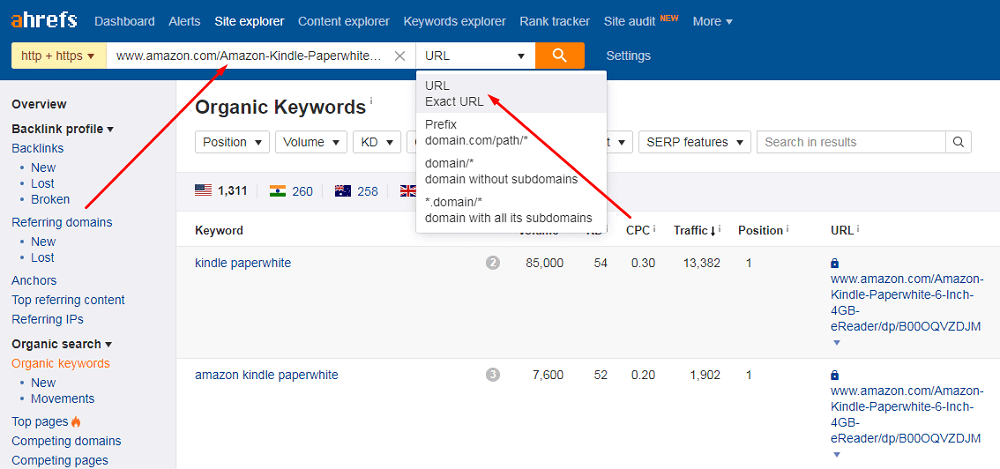
Ahrefs will reveal the keywords sending organic traffic to the page. That way, you’ll be able to optimize your own page with juicy keywords that drive some traffic from best-selling items to yours.
Since a popular page on Amazon can rank for hundreds or even thousands of keywords, it’s worth using the built-in filters to narrow them down.
Additional sources for Amazon keyword research
If your business is already live on Amazon, you can download a list of search queries that make sales. This is call automatic targeting, and one of its benefits is that Amazon will show your ad to any relevant search query. This is based on your product’s description.
However, targeting can be fairly broad, and we don’t want to pay for clicks targeting the wrong traffic.
Regardless, you may come across some good keywords that you didn’t identify when initially creating your product listing.
For example, here is the keyword data from our marshmallow sticks.
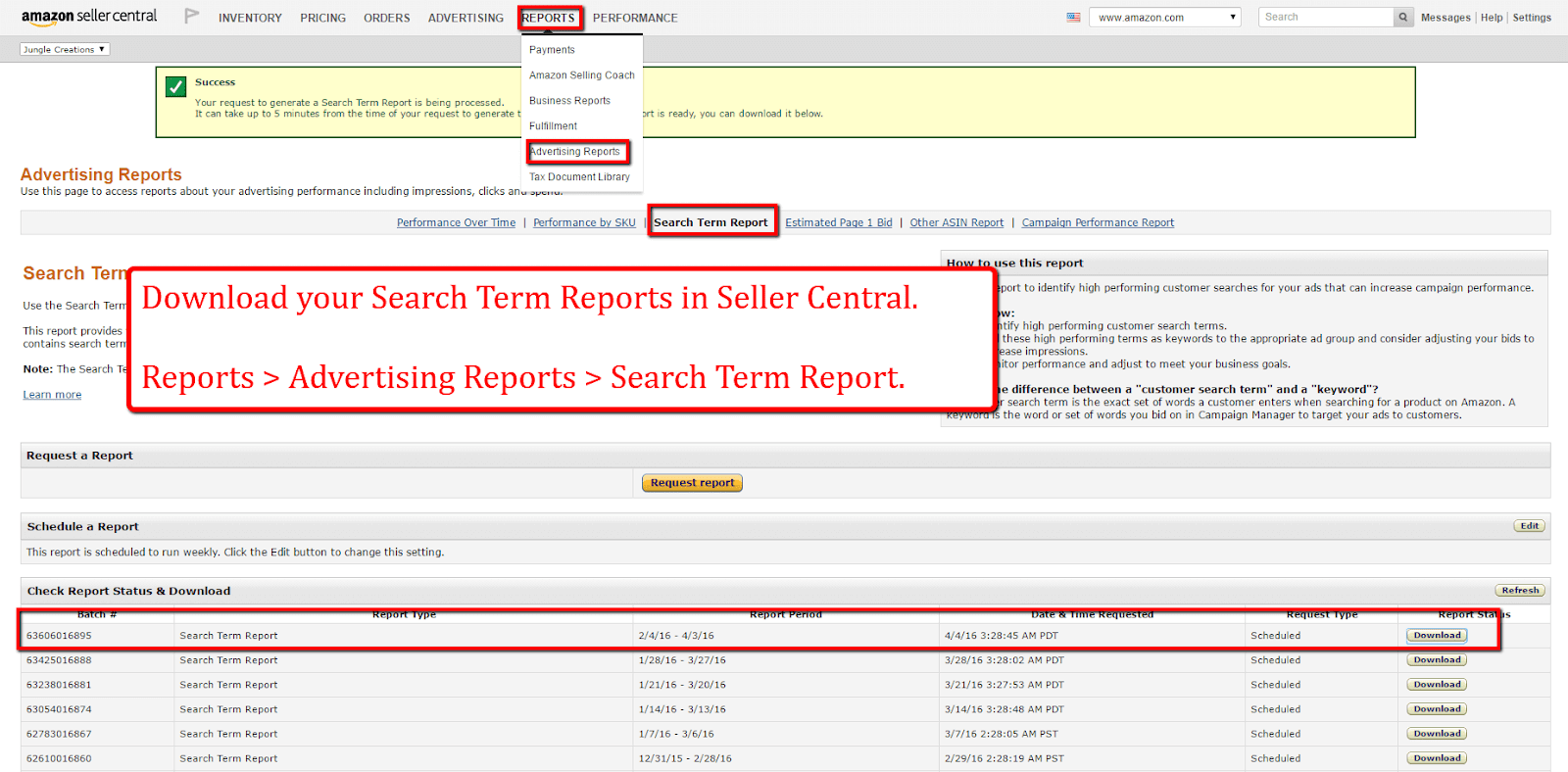
Once you download the report into Excel, you can organize it by which ‘Customer Search Term’ generated a sale (go to the Data Tab > Filter > Largest to Smallest), and it will look like this:
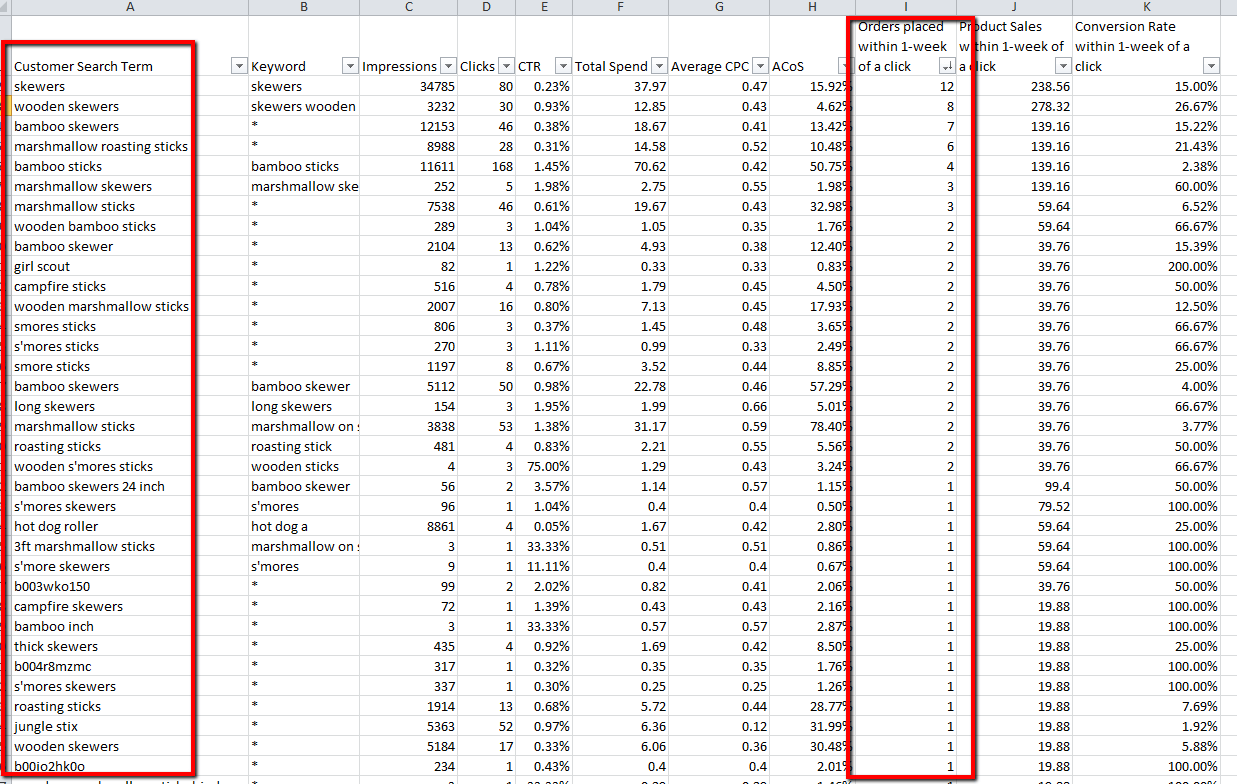
This is the data from our Jungle Stix campaigns. As you can see, there are some customer searches we did not anticipate. For example: “girl scout”. Since it has converted into sales, we may want to incorporate these search terms into our product listing.
Another helpful tool is Soovle (which offers search queries from eBay, which is also a search engine with high purchase intent):
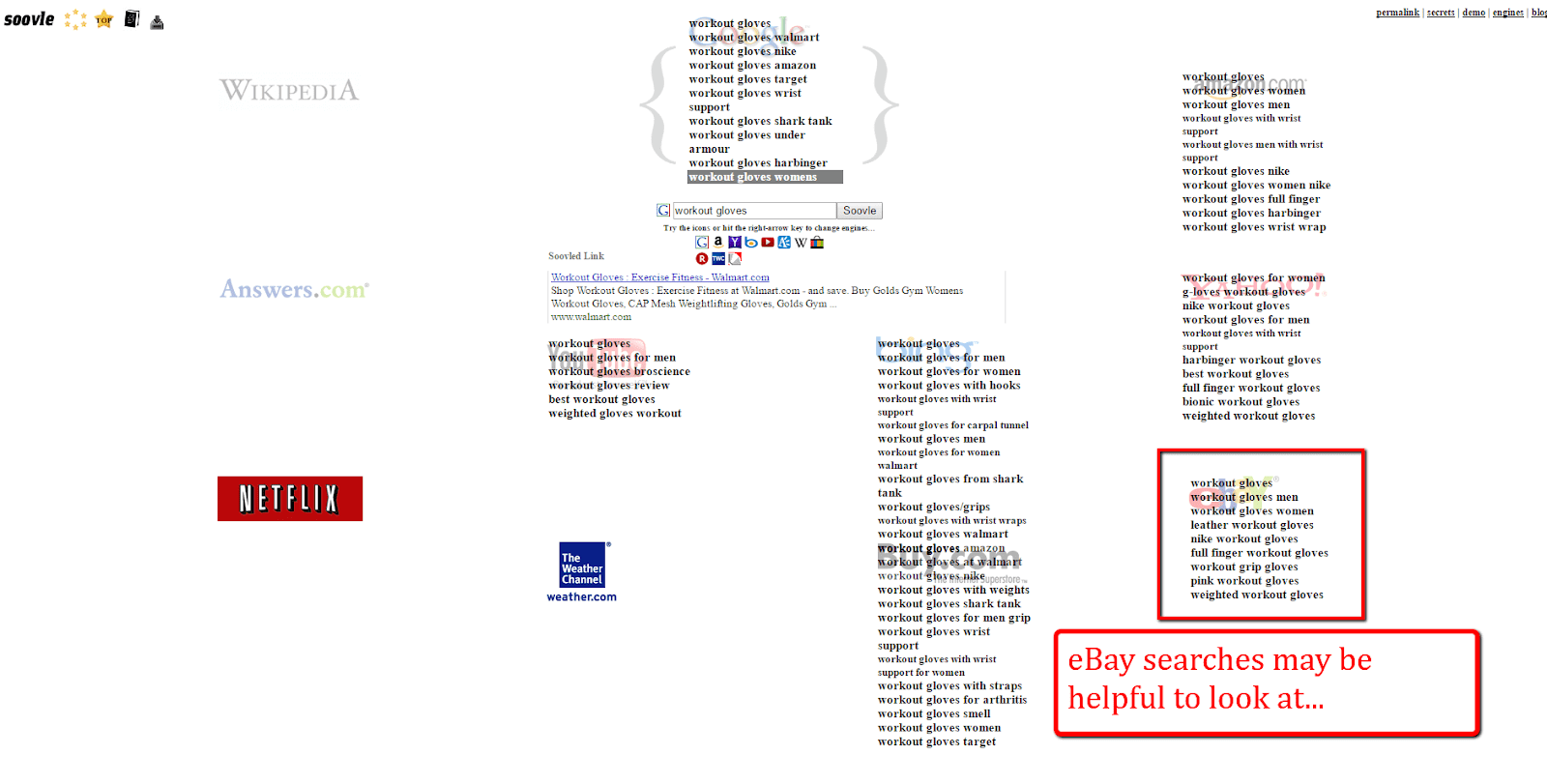
Another free tool is Ubersuggest, which also pulls all of the related keyword searches. And for those more visually inclined, you can reference a word cloud that may surface some new ideas:
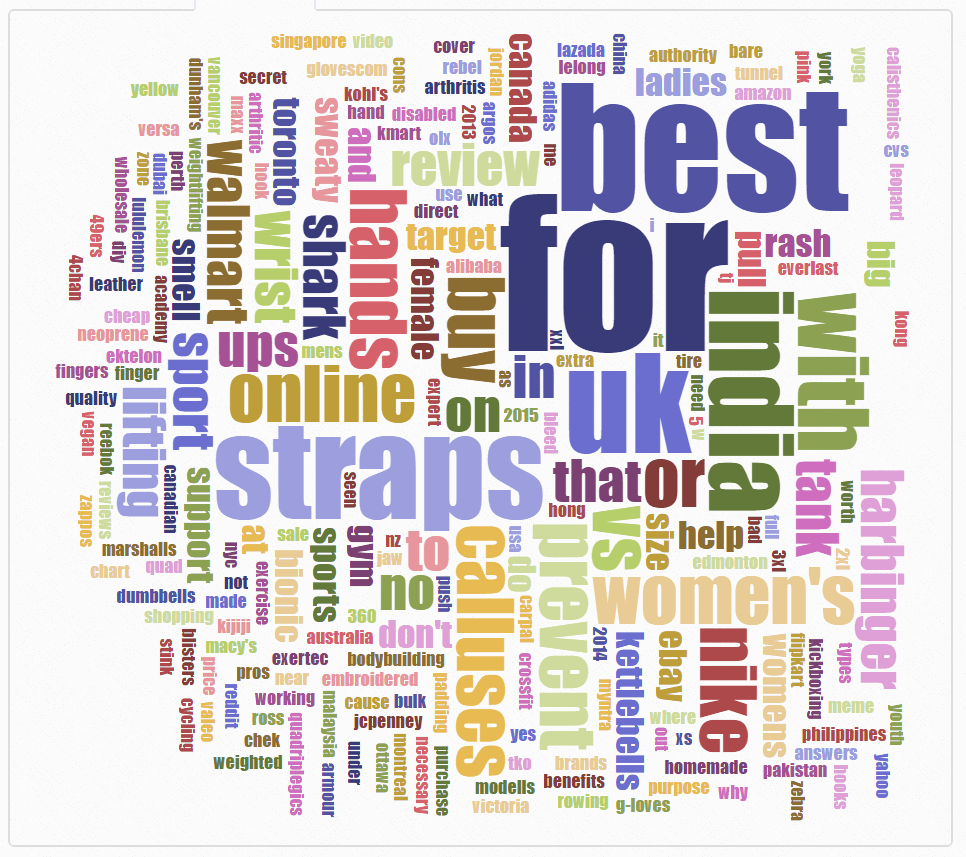
In conclusion
Set yourself up for success by finding the keywords with the highest demand! As you can see, these are all useful tools and provide helpful data to craft your keyword-optimized listing.
If you’d like to learn about other tools successful Amazon sellers are using, check out our 2021 State of the Amazon Seller Report. Or, if you have tools you’ve found useful in your keyword research that aren’t mentioned here, please share them in the comments, as we would love to learn of other resources!


 93 Comments
93 Comments
93 comments on “The Top Tools for Amazon Keyword Research in 2022”
This is the best guide I have ever seen on Amazon Keyword Research. This is very useful information.
Thanks for reading!
This is the best guide I have ever seen on Amazon Keyword Research. This is very useful information. Kudos Jungle Scout Team.
Thanks for reading! We are glad you got value out of our Keyword Research article.
Great blog! I hope to reach more targeted customers and improve my sales, thank you very much!
Thanks for reading!
Thanks for sharing Brian Connolly, I personally use google keyword planner and ubersuggest for keyword research.
Thanks for reading and for the tool suggestions!
Thank you for this guide! I’ve been using ahrefs for the longest time and I’d like to try out Keyword scout. Do you have another blog or guide for this? Would be really helpful.
Thanks for reading! Check out our latest YouTube video on Keyword Scout! https://www.youtube.com/watch?v=2bN6QD8VFG4
Thank You for the easy guide, This keyword research strategy helps me to find out the best Amazon keywords.
Thanks for reading!
thanks for the post about how to get keyword for the most Amazon products ..
Junglescout is no doubt the best tool to search for money making keywords on Amazon. Thanks for this article
Thanks, Ryan!
Excellent stuff to scale your Amazon business. Great for affiliates as well as sellers.
Currently, I am running 3 micro-niche Amazon affiliate blogs and I was not aware of the Keyword Scout tool.
Two weeks ago I started using this tool and the result I am getting is really impressive. Now the Amazon keyword research become very easy for me.
Thanks for adding this tool in the top position.
That is great to hear! We are glad to know that our tool is helpful with your business! 🙂
thanks for the post
Does this apply primarily to products sold on Amazon or to books sold on Amazon?
This info applies to anything you can sell on Amazon — books or otherwise.
Thanks for giving me the useful information.
amazing knowledge man it really appreciate
Hi Dave,
Finding the keywords for Amazon products is different from finding keywords for the website. You explained very well how we lose thousands of $ if we are not using the Keywords correctly. I liked the case study and example shown by you. Also, the tool Jungle Scout is very amazing to use and implement for Amazon products.
Thank you for sharing this wonderful post with us.
great post nice tips your post is very helpful thanks for the sharing
thanks for the post about how to get keyword for the most Amazon products ..
Thanks for reading!
This is best guide I ever found about Amazon Keyword research. The very helpful information.
Kudos! Jungle scout team
We are glad you found this article helpful!
Thanx for sharing such a helpful article. It definitely helps me to find the right amazon keywords for my blog.
Thanks for reading!
Thanks for the great content regarding to Amazon PL too,s.
Keyword Scout I used myself and will recommend it to all Amazon Sellers. Keyword research is a must. remembers, a single word variation can get you top ranking. Optimize your tags and descriptions well.
great article once again.
Great Article, Thank you so much for posting this important information.
Thank you for all tips.
As a digital marketing person this article was so much informative and helpful to gain more knowledge. Thank you for sharing.
Thank you for sharing about these keyword research for your Amazon product with us, these will be really helpful to many.. I love reading this blog; it talks so much about planning a great idea about it. Keep sharing such informative articles in future, will be appreciated.
Thanks for this really helpful article. For a new seller like myself, the information out there is mind boggling but your article gives sound advice on where to start.
Hi Dave,
I was looking for an in-depth guide on Keyword research for Amazon products, Thanks for the article. It was very helpful to me.
Keep up the good work.
Best Regards
Aditya V
Thanks for reading, Aditya!
Thanks Dave sir for such a great and amazing post of keyword research for amazon!
I think Keyword Scout is very useful, it can help you estimate a lot of things, and with the algorithm, we’ll know how to allocate the investment for the product.
thanks for the information
KEYWORD SCOUT WORKS IN INDIA?
Hi Udaybhan,
Great question! No, it currently does not. But we’re working to expand our markets throughout the next year.
keyword scout is not available for UK amazon products?
Hi David,
Great question! Not yet, but it’s definitely on our agenda for 2019.
Wow, very nice information you have explained with images it’s clear to understand. These are the tools very helpful to find the keywords.
Thank you
Hi, nice article !
But I have a couple of doubts 😀
In Amazon Spain (i give Amazon SEO Services here in my country), the title lenght allowed by Amazon is to small. Only 80 bytes including brand name. So we can put very few keywords in the title, we can only used in the inside seller central keywords product box, bullets points and description.
Can you give us some advise to attack more keywords with this kind of limits?
Second doubt, we dont know if in spanish language, i have to writte in the “inside seller central keywords product box / field” singular and plurar, masculine and femenine of a word that i want to possition by, because this make us spend a lot of characters / bytes to that field.
Example
– Metallic in english could be in spanish:
– Metálico (masculin)
– Metálica (femenin)
– Metálicos (masculin + plural)
– Metálicas (femenin + plural)
Like this we have to put in the “inside seller central keywords product box / field” those 4 terms, and like that we put less words (of other Search intentions) in that field that is limited to 249 bytes in EU.
Thanks a lot!
This is one of the best articles on Keyword research that I have encountered. However, To add more to this, I just wanna point out a tool (LSI Graph) for an outstanding long tail & semantic keyword research. After the recent Google algorithm, Google is now, however focussing more on context & semantics than keyword alone. What do you think about it?
Thanks
Hi Prabhash,
Google research isn’t really relevant to Amazon PPC research since it’s two different search intents. Google is content whereas Amazon is shopper.
I had been using KeywordTool.io and the Amazon autosuggest feature, but you really only get a few suggestions with those methods. It’s so cool that you can get a huge list with Keyword Scout – talk about a secret weapon! If you want to get inside your customer’s head, you’ve got to dig deep.
I often used the first and second tool but google planner is a bit different now than the image shown above. Especially with the number of monthly searches, it doesn’t show the precise number now, but, still helpful source and still using it up to now. Ahref is my favorite. Keyword Scout is interesting would love to explore this now. Thank you for sharing this sources.
It was a great read must say but I still not sure these keyword research data can really gives the better keywords especially when we talk about Amazon search data. The reason is; I learned about these two tools recently 1) merchantwords and 2) amzdatastudio
These tools claim to offer amazon specific search volume data! I am not sure how they are extract the data but the chances are they use amazon API (if they provide) to give exact search volume details.
Can you please share your views on these tools?
Hey John,
I’m not sure about amzdatastudio, but I believe merchantwords uses (or used at one point) Amazon auto completes to get its data. Additionally, I’ve found Keyword Scout to be extremely accurate in its searches. Plus, it comes in the Web App package which includes The Product Tracker, Niche Hunter, and Product Catalog.
Great! I liked the idea of taking search results from Google tool after taking the keywords from keywordtool.io.
Hey, nice blog. Bookmarked. Thank You.
Hi -thx for the info , sorry if I’m asking a question that would have been asked before , but – where do we place all these keywords once we have them ?
In our descriptions – in our bullet points or in our title ? Or in the backend somehow ?
I’m hearing a lot about keywords and I can understand that this is really important to be found – but I don’t understand where to place them or how too – any advice or recommendations to get up to speed or outsource ?
Thx
Matt
Hey Matthew,
No worries – and you’ve got it right, you want to include your targeted keywords everywhere you can – the product title, description, bulletpoints, and even in the image descriptions. I would start with the tools we recommend in this post first before thinking of outsourcing. And keep your eye out for some new keyword tips coming from us soon! Hope this helps.
Melissa
[…] 3 Tools to Do Keyword Research for Your Amazon Product […]
[…] 3 Tools to Do Keyword Research for Your Amazon Product […]
[…] 3 Tools to Do Keyword Research for Your Amazon Product […]
Hi, thanks for sharing great information about Keyword Research Tools this article is very helpful.Recently I am using Google Keyword Planner.
What’s up, all is going nicely here and ofcourse every one is
sharing facts, that’s in fact good, keep up writing.
[…] companies like Amazon.com is one of the largest search engines in the world for ecommerce and products, book titles and […]
Hey, great post. Just one question. How to proceed with keyword research when you launch the product which is a new on the market and there is no keywords to start with research. This is a very specific product. I had in my mind one idea (using another marketing channels like facebook to get awareness about product) but this is very expensive. So I dont know how to start with low cost strategy. Any idea?
Hey Viktor,
Good question – is this a product invention of yours? Or are you trying to private label a very specific product in particular? We always recommend for the private label model to find an existing product that has demand and low competition, that you can manufacture under your own brand and sell on Amazon. This is the easiest way to start generating revenue fast, as you are tapping into existing demand.
However, if you are a product inventor then you will need to alter your approach somewhat. If a product has very minimal demand it can often require a strong marketing strategy to inform people of your product and their need for it. This can be very expensive like you say!
I would still suggest looking for similar products and conducting keyword research in the same ways shown in this post to see what people are searching for in relation to your product. Also try thinking outside of the box. Does your product solve a problem? Try KW research around that topic, etc.
I am not a product inventor, so I have never been through this process. Perhaps someone else in the community will be able to chime in with some more feedback!
Thanks for reading,
Kym
Great post
What number in the GKP should we look for under average monthly searches?
Also, how can you know you got a keyword that has traffic? When looking how much sellers sell of a specific product with Jungle Scout, how can you know that that keyword has brought all he sales? Maybe they’re targeting a few keyword and most of the sales are related to the other keyword…
Hey Lior,
It’s really difficult to give even a ballpark figure because it is all relative depending on your niche, your product and how many searches other similar keywords are getting on average each month. The best thing to do is do some keyword research for a very broad range of keywords related to your niche or product, then you will get a sense of what good search volumes look like for that niche. Take a look at this Million Dollar Case Study post for an in-depth look at keyword research!
The average monthly searches in Google’s Keyword Planner are just an indication of which keywords you should target. There is no real way to see which keywords have bought in actual sales on Amazon – unless you run Amazon PPC campaigns, in which case you can actually attribute PPC sales to specific keywords and customer search terms. Read more about that here!
Hope that helps!
Kym
Great work, thanks for exposing me to the various tool kits which I will certainly apply to move my business on Amazon.
Good post!
Thanks a lot
Love your post!
I’ve been diving into keyword research lately and it can be a bit overwhelming so I appreciate all the information and free tools you have shared here!
Google Keyword Planner is no longer free (or at least, the data is much less useful) without a paid campaign. I’m trying to figure out the least add spend possible to be able to use the tool!
Hey Megan,
Thanks for the appreciation. You are right about Google Keyword Planner, this blog post is several months old now, but I have added a little update in the content. Thanks for the nudge 🙂
I would still use Google’s KW planner, even with limited data it gives a very broad overview. Would be really interested to know if you find out the magic number in terms of spend in order to get the most out of it. Let us know if you do find out!
Kym
Indeed a great post about keyword research.
It is true that keyword research is the very 1st step to target the right traffic from search engines like Google. I have seen so many people who never does keyword research and always keep themselves busy in writing articles on different different random keywords which is not good.
If We really want to get potential traffic which can converts easily then we must have to target the right keyword.
For a productive work, every expert suggest to target long tail keywords with having low competition. Because long tail keywords with low competition are easily to rank rather than short tail high competitive keywords.
I always use Google Keyword Planner to check the keyword search volume and Long Tail Pro for keyword competition score. I am glad that You have covered such an indepth article on keyword research.
Thanks for sharing it with us. 😀
Hey John, thanks for stopping by and sharing your experiences.
For checking domain competitiveness, I use the Moz free extension here, which is cool because it shows the figures inside of the google search page. You may want to check it out: https://moz.com/tools/seo-toolbar
hey Gen, when I use adwords, with an account, it looks very different from your screen shots. Also it seems like it won’t let me see a dashboard until I commit to a campaign. Did they change it recently or maybe I’m not clicking the correct button?
Chris
I see another comment above that had the same issue. I need to run a small campaign.
I started to run my business on Amazon website but there still are a lot of thing needed to learn. I want to be more stronger and need more time to learn with JS. Thanks for your sharing.
Hey Clophy,
Glad that you are building your Amazon business. We try to put out as much helpful content as possible, one thing that may be helpful for you is watching to launch of Jungle Stix.
You can see every step of the process in these posts here: https://www.junglescout.com/blog/category/collaborative-private-label-product-launch/
Hope that this helps, if you have more specific questions let me know and I can try to point you in the right direction.
Another great post! I’ve used all those tools in SEO work too.
Thank you.
hey, thanks for the comment. Do you have any additional tools or software that you’ve found helpful in identifying good long-tail opportunities?
how about merchant words? u ever tried it?
Hey David, I have used the free version of Merchant Words, have not used the monthly paid subscription though. I guess the tricky thing is that there really is no standard for comparison, as there isn’t any data released by Amazon. I do think that it is helpful as a relative comparison between keywords though.
Though it costs a little, as does Jungle Scout pro, I’ve found MerchantWords.com useful as it tracks keywords specific to Amazon product searches.
Thanks for the suggestion, Gary!
Thanks for the great article!
Keyword research before ordering a product may also help you to customise your product even more. I recently found that by doing keyword research for the product I will be sourcing I also found out other things people are looking for the product to have, and funny enough, I found high volume keywords for the product that competitors aren’t using and also features I could add to the product to differentiate myself further!
Hey Daniel,
Great point, absolutely right! It is especially helpful if you have a main (parent) product, and the option to do different variations, whether men’s/women’s, color, size, half/full finger like this example with workout gloves.
Sounds like you found a great untapped opportunity!
I was a dream about business. When I was joined a new seller Amazon account few weeks ago. But I started to learn a little about seller this products and I had a problem with customer satisfaction. Because I did not realized not to respond the customer’ s email and their package did not arrived yet or not receiver It or delivery late. When I clicked the confirm shipment not to provide tracking numbers. I had to refund them back. I had made a big mistake. I did not know not to print packing slip or buyi shipping.. That’s why I was still stress. So. Until I found your junglescount on YouTube. I want to learn and study more about the jungle scout if I am interesting into to sign or not decide yet. I need more time to learn about the jungle scout. I don’t want to happen that I made a mistake again.
Hey Dennis,
Sorry to hear about your mistake. It sounds like it was a situation where you lost some money, but learned something.
Let us know if you have any other questions about selling on Amazon or Jungle Scout. Best of luck!
Gen
Hi Furukawa San
we do like everything of the junglescount,but i am so sorry to know we couldn’t use in amz jp that is our main market.
we would like to know do you have any services or tools to help those people like us.
hope to hear from you soon
chris
My favorite tools are keyword scout and semrush. ubersuggest I didn’t find accurate.